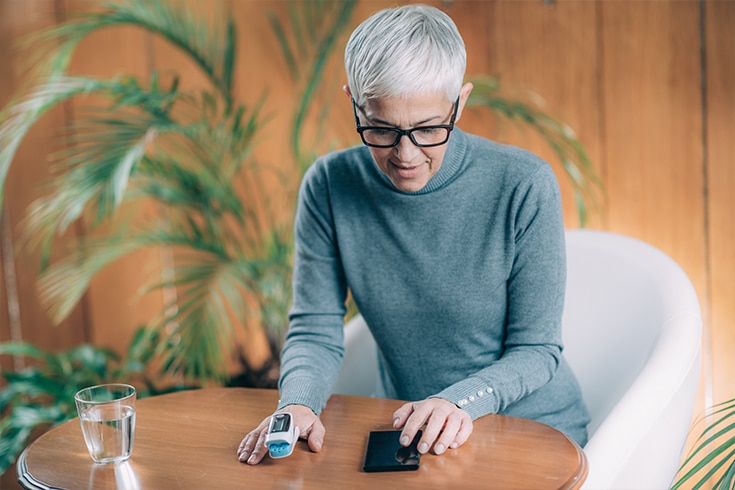As the fourth leading cause of death and a major cause of disability in the United States, chronic obstructive pulmonary disease (COPD) affects nearly 16 million adults, and many more suffer from COPD symptoms but have not been diagnosed or treated.
What is COPD?
COPD is a progressive and debilitating condition that encompasses various lung diseases, such as emphysema and chronic bronchitis. It can cause airflow blockage, decreased lung function and other breathing-related problems.
While there is no cure for COPD, fortunately, advancements in healthcare technology can make care more accessible. One example is remote patient monitoring (RPM), which helps providers with the early detection and management of care for patients with COPD.
What is remote COPD monitoring?
RPM or remote COPD monitoring can play a valuable role in the diagnosis and management of COPD by providing providers with critical health data about a patient’s condition. Remote COPD monitoring enables clinicians to track a patients’ pulse and blood oxygen levels through connected health devices, such as pulse oximeters. This method not only helps care teams assess the effectiveness of COPD treatment, but it also offers detection of low blood oxygen levels, a key indicator for COPD patients.
How is RPM instrumental in managing COPD?
Early Detection and Diagnosis
RPM can help identify COPD in its early stages and monitor patients who are at risk for the condition, even before they exhibit noticeable symptoms. This allows for more prompt intervention and treatment, potentially preventing the disease from progressing.
Monitoring Disease Progression
Remote monitoring devices can track vital signs such as pulse oximetry, heart rate, respiratory rate, and blood pressure, which are critical in evaluating a patient’s respiratory health and disease progression. Any abnormal changes in these factors can signal a potential issue or worsening of the condition.
In fact, research has shown that COPD patients have a high rate of hospital readmissions. One study found that among Medicare beneficiaries admitted to the hospital for COPD, 19.6% were readmitted within 30 days.
Medication Management and Adherence
COPD patients often rely on bronchodilators and inhaled corticosteroids to manage their symptoms. RPM can help healthcare providers determine the effectiveness of these medications so they can adjust accordingly.
Improving Quality of Life
COPD patients can integrate RPM monitoring into their daily routines to identify triggers that worsen their symptoms. This enables them to make lifestyle adjustments to prevent breathlessness and other discomforts.
By integrating RPM into COPD management, healthcare organizations can empower patients and providers with the tools and knowledge to proactively manage their condition while enhancing health outcomes and quality of life.
Start The Path Toward Better Patient Care
Have questions about how remote patient monitoring for healthcare will work for you and your patients? Let’s have a conversation.
Access the Latest RPM News
Stay up to date with the latest news, articles and webinars about remote patient monitoring and telehealth.
"*" indicates required fields
